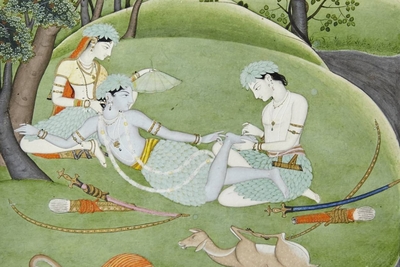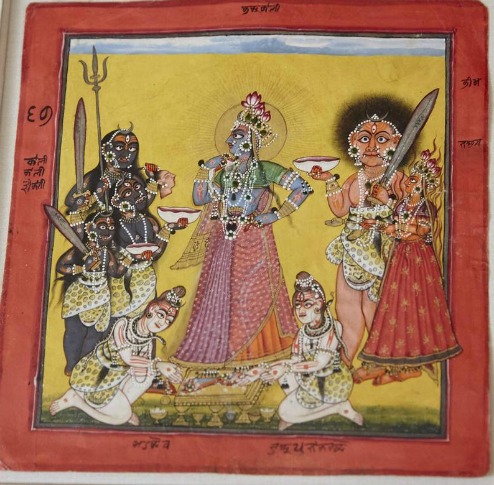 Flash back to 1984, and to this excerpt from an article–no, a brief, really, which in itself says something–in The New York Times:
Flash back to 1984, and to this excerpt from an article–no, a brief, really, which in itself says something–in The New York Times:
Also of interest this week: ”The Flame and the Lotus: Indian and Southeast Asian Art From the Kronos Collections” (Metropolitan Museum, Fifth Avenue and 82d Street): Reflecting a rise in collector interest throughout the country, the more ”exotic” art outside the pale of Western civilization is beginning to get its due in American museums. And at the Met, Indian and Southeast Asian art, once neglected, is coming along nicely, thanks partly to its cultivation by Martin Lerner, curator. This, the museum’s first loan exhibition in the field, was borrowed from a collector, Stephen M. Kossak, who with his family has already given the Met significant objects.
The 86 works of painting and sculpture – from India, Sri Lanka, Burma, Thailand, Cambodia, Vietnam and Indonesia – form a rambling miscellany, ranging from 1500 B.C. to the late 18th century. If there’s an overall rationale, it’s that the objects were chosen for their esthetic, rather than historical, interest, with an emphasis on spirituality and refinement of craftsmanship. And while not everything here is of equal quality, it is obvious that Mr. Kossak, aided by Mr. Lerner, has a very discriminating eye.
The first loan exhibition in the field! We have come a long way. Today the Met is again the beneficiary of that eye. On June 14, it will open Divine Pleasures: Painting from India’s Rajput Courts—the Kronos Collections, another exhibition made possible by Kossak. These works, nearly 100 of them, are a promised gift to the Met from Kossak and his family.
I tell the story of Kossak and his collecting ways in an article for The Wall Street Journal that was published in the May 31 edition, headlined A Personal Collection Goes Public:Â Rajput Paintings at the Met.
 I have seen many of the works at Kossak’s home and I am eager to see them in an exhibition setting. These works are, as I wrote, “…playful paintings, which were made in the small kingdoms of northern India from the 16th to 19th centuries. Inspired by Hindu myths and poetry, the imaginative, detailed scenes of love and life among the gods are painted on paper in opaque watercolors and ink.” They are not Mughal paintings, which the Met owns many of. These works have more of an indigenous feel, higher coloration–they complement the Met’s holdings of Mughal works.
I have seen many of the works at Kossak’s home and I am eager to see them in an exhibition setting. These works are, as I wrote, “…playful paintings, which were made in the small kingdoms of northern India from the 16th to 19th centuries. Inspired by Hindu myths and poetry, the imaginative, detailed scenes of love and life among the gods are painted on paper in opaque watercolors and ink.” They are not Mughal paintings, which the Met owns many of. These works have more of an indigenous feel, higher coloration–they complement the Met’s holdings of Mughal works.
Regarding the Rajput works, I wrote:
Their vibrant hues—reds, yellows, blues, golds, whites raised to simulate pearls and greens made with beetle-wing casings to sparkle like emeralds—are matched by their colorful titles. They include “Krishna and the Gopas [Cowherds] Huddle in the Rain,” “Krishna Swallows the Forest Fire” and “Rama and Sita in the Forest: A Thorn is Removed From Rama’s Foot” (above right).
Each one, [Kossak] said, was bought because it evoked a visceral emotional response. “It’s lightning-bolt recognition across the board,” he said.
As the former head of the Asia Society Vishakha Desai told me, “The quality is at a very high level and there are only one or two Indian paintings collections like this that have been formed in the last 20 years, formed with the idea of getting absolutely the best.â€
I think it will be a treat!
Photo Credits: Courtesy of the WSJ and the Met
I consult to a Foundation that supports the Met.
